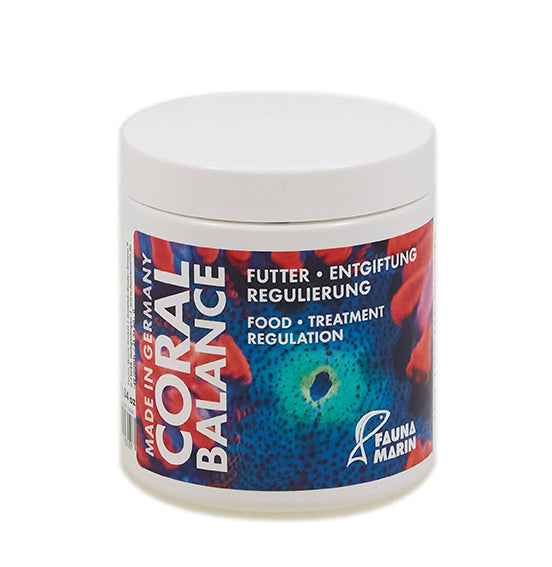EDIT 10/20/2023
Well, the system has preformed beyond expectations and grown corals quicker than what I would have imagined.
You can read about the "Bacteria-Powered Reef" in the latest issue of Reef Hobbyist Magazine.

Original article: http://reefsite.com/bacterial-driven-system-a-recipe-for-success/
It’s no secret that I am a big fan of carbon dosing. I believe that it has played a large part in my success over the years. No other method that I have employed has produced the results exhibited via carbon dosing and bacterial additions to the system. The one two punch of nutrient export and coral nourishing properties is very hard to beat. Yes, there are other system that work but, in my experience, they require too much work for less than desirable outcomes. That is, when stacked against my experiences with carbon dosing. I have run the gamut of nutrient control from chemical (GFO) to natural (Refugium) and while they all lowered my nutrients not a single one fed my corals. Yes, the system in comparison to one carbon dosed was just as clean but the corals did not exhibit the same amount of growth as measured in a carbon dosed system.
I paint a rosy picture here but it’s not all sunshine and rainbows. Carbon dosing requires a good understanding of your system, and should be left to intermediate and experienced reefers. This method can quickly reduce your nutrients, shocking corals into a rapid tissue necrosis event. I have never suffered such an issue but it is important to point it out. As with any new method or change, one must start slow, observe, and gradually increase dosage. As we dig into the system, I will lay out some of the benefits and issues with dosing carbon and bacteria. I will also share my opinion on the matter and why I believe that even after all these years since I first started using and recommending it, carbon dosing is still my preferred method of reefing.
I will preface what follows by stating that I am not a scientist. Everything I write is based on personal experience. I have setup and maintained a number of award winning and successful reef aquariums but am by no way an expert on the matter. If the science looks funny to you or have a better method please by all means chime in or reach out directly to me. I am simply passing down my methods as I believe that replication is often the best course of action when attempting to build success. You take the best practices of those whom you would like to emulate and make it your own, adding and subtracting along the way. There have been many articles written on the subject, quite a few with much more detail and science. This is simply my take and philosophy on the matter. In this hobby and as in life, we are all students and constantly learning.
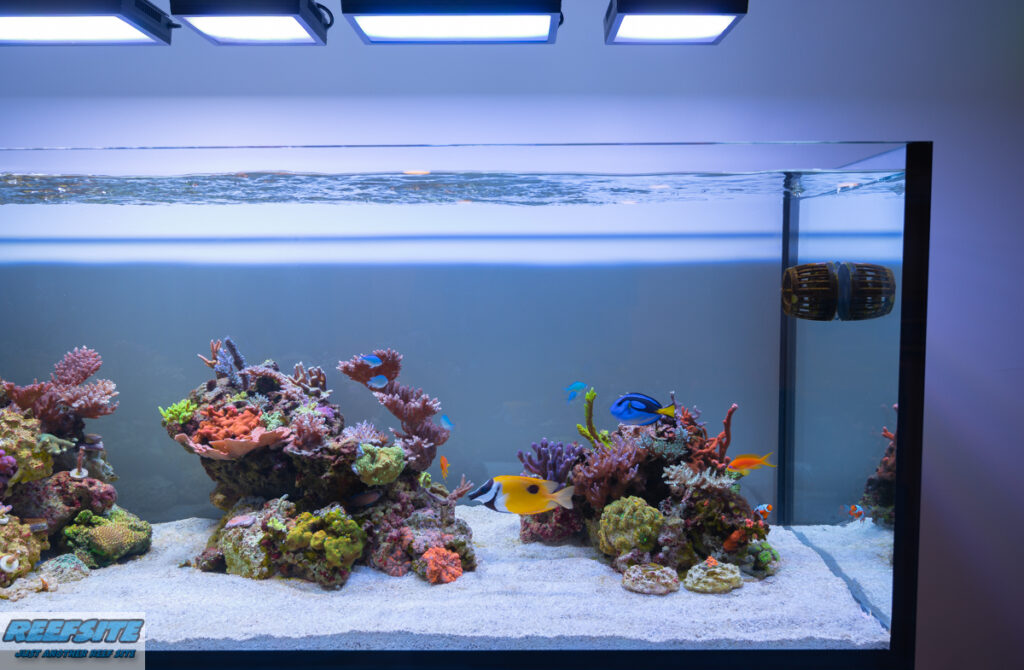
The Basics and Benefits
So, you’ve read this far so its safe to assume that I have peaked your interest. No doubt it was likely the images of my aquariums that led you in on this endeavor. Fundamentally, I believe that carbon dosing has helped me immensely and allowed for much success with SPS ushering in unprecedented growth and coloration. This is not a new system though. I have been leveraging bacteria and carbon dosing for 17+ years now, and I believe that KZ Zeovit has been doing it for even longer. Provided that you are careful and fully commit to the aquariums success, carbon dosing with be one of the greatest of tools in your arsenal.
I believe that carbon dosing is misunderstood. Far too many assume that it is simply a method of reducing nutrients. While this system of dosing will reduce nutrients, its primary benefit is the nutritional component and what it can do for your corals. Many are often shocked when told that I generally only feed flakes and pellets into my system. I do not add any of the myriad of coral food options. I feel that feeding these foods is a waste of time and money when you already have everything you need present in the system. You simply need to key in on that component and leverage it for maximum success. The component I am speaking of is bacteria.
The way the cycle works
carbon is dosed>bacteria multiply>nutrients are consumed>corals feed on bacteria>remaining bacteria is exported via a protein skimmer.
Nutrition in, nutrients out. That is what we are trying to accomplish here. Corals can derive 100% of their nutritional requirements through the absorption of Nitrate and phosphate, of which most systems have plenty of to go around. The key here is to get it into a form that the corals can absorb. By carbon and bacteria dosing we are increasing the number of bacteria in the system, which in turn will feed on the nutrients allowing for the corals to consume the bacteria. The final step in the process is for the skimmer to export the remaining bacteria. This final step is key. I would not recommend carbon dosing without a skimmer. Multiplying bacteria will reduce oxygen levels in an aquarium and a skimmer is a good way to offset this reduction. Secondly, the excess bacteria much be removed from the system, lest it be allowed to complete its lifecycle a, releasing stored nutrients back into the system.
The dosing itself it fairly straight forward. Simply follow the instructions on the bottle(s) and dose accordingly. I dose bacteria and carbon at first light, just as soon as the lights have turned on. This ensures that I am hitting the photosynthetic process in stride, reducing the likelihood that I will run into an issue due to a limitation of oxygen. I also want to have the least impact on Ph as possible. During daylight, organisms in the aquarium absorb C02 while at the same time increasing PH. Dosing late in the day is not recommended simply due to the decreased amount of oxygen in the aquarium available at that time. I do not turn off my skimmer or adjust any of my filtration systems when dosing. I will generally dose all of my supplements during this same time period without issue. The fish are also fed at this time of day as part of their twice daily feeding schedule.
It cannot be overstated that you must start out slowly with this system. I would recommend that you dose 25% of the recommended dosages as instructed on the bottle(s), moving up 5% daily until you have reached 100% of the recommended dosages. At first, you will not see a major change and that may be discouraging but give it time. Soon enough, you will start to see increased and/or darker skimmate, increased polyp extension on corals, increase in days required before cleaning the aquarium viewing panes, and possibly having to change the filter socks (if used) on a more frequent basis. At around the 3-4 week mark you should notice a quantifiable difference in the nutrients and coral growth and appearance.
During this initial phase, and at the one-month mark, care must be taken to observe the corals and overall system. Any changes in coral coloration should be noted and adjustments should be made based on your observations and Nitrate/phosphate tests. If corals have not lightened up in appearance and nutrients are still at a higher than expected level you will need to continue increasing the dose until the desired parameters are reached.
Overdosing is common and care must be taken here.
Some telltale sign that you are dosing too much carbon:
Corals cannot utilize nitrate without phosphates present. This fact, amongst others has made me switch from vodka to a more balanced approach, one that will help maintain the balance. To help achieve this balance I dose Tropic Marin NP Bacto Balance as a carbon source. This source of carbon helps the bacteria to reproduce while ensuring that the correct ratio of nutrients is added to the aquarium. NP-Bacto is a mixture of carbon, nitrates and phosphates. If you are starting out with higher than desirable levels then I would start off with the Elimi-Bacto and once nutrient levels have reached the desired level, switch over to NP-Bacto to retain the balance.
This is the simplest method that I have found for maintaining the correct ration of nitrate and phosphate as you can quickly deplete a system of the aforementioned nutrients, which can and will result in undesirable outcomes. Vodka, sugar and even vinegar will work as carbon source but all eventually gave me cyanobacteria at some point in time. However, With Bacto-Balance, in two years of use I have yet to encounter a major issue with cyanobacteria or the sprouting of other undesirable algae. The second benefit of using Bacto-balance versus a DIY mixture is that I have been able to maintain an equilibrium of nutrients in the system without encountering issues such as the lighting of corals or reduced growth due to a lack of nutrients.
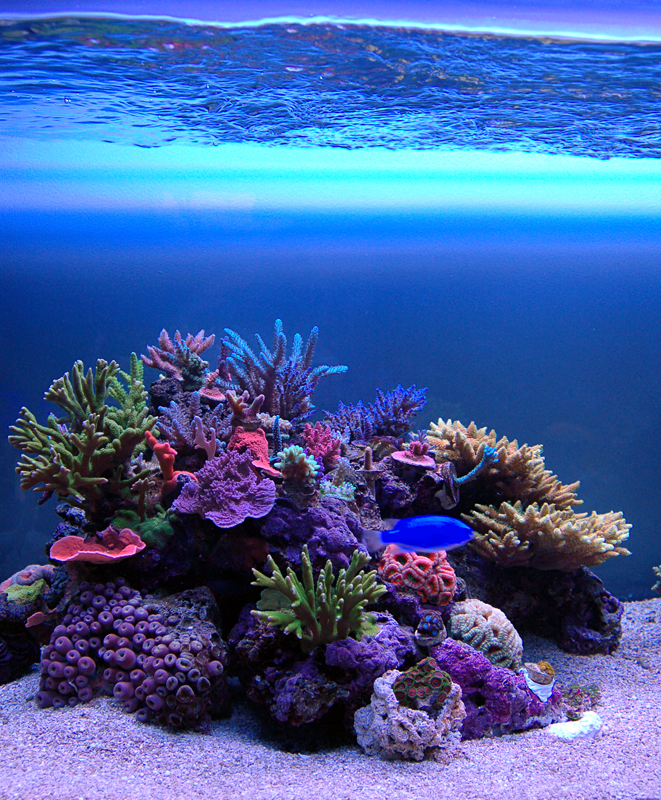
Toss Out the Coral Food?
Out of all of the benefits of carbon dosing, the feeding of the corals is my favorite feature. No other system I have used has provided this amount of growth and at such a cost-effective basis. Just think of how much money is spent on foods designed to feed corals. Many of which were never even designed for consumption by the corals. Here you have bacteria, something that is cheap and easy to reproduce, that will be readily eaten by the corals and is in lock step with their evolution and biology. Throw in the nutrient reduction component of dosing and you have a one two punch that is unmatched in the hobby. If you have fish in the aquarium and are already feeding them a balanced diet then you should have no need for coral specific food. The great thing about carbon dosing is that it will allow for you to feed much more food to the fish without impacting your overall system stability. The additional food will in turn fuel more rapid growth in the coral and likely the fish.
I know, it may run counter to everything reefers are told these days but I am proof that you do not need a steady stream of coral food(s) to grow corals and have success in the hobby. Save the money that would have gone towards coral food and invest in an ATO system, Kalk reactor, better skimmer or a higher quality fish food. But hey, if you are happy with the coral foods then by all means continue using them as this system here will only serve to compliment it as you will now be able to feed even more food. The coral food comments here are not scripture, and are simply my opinion and experience with them.
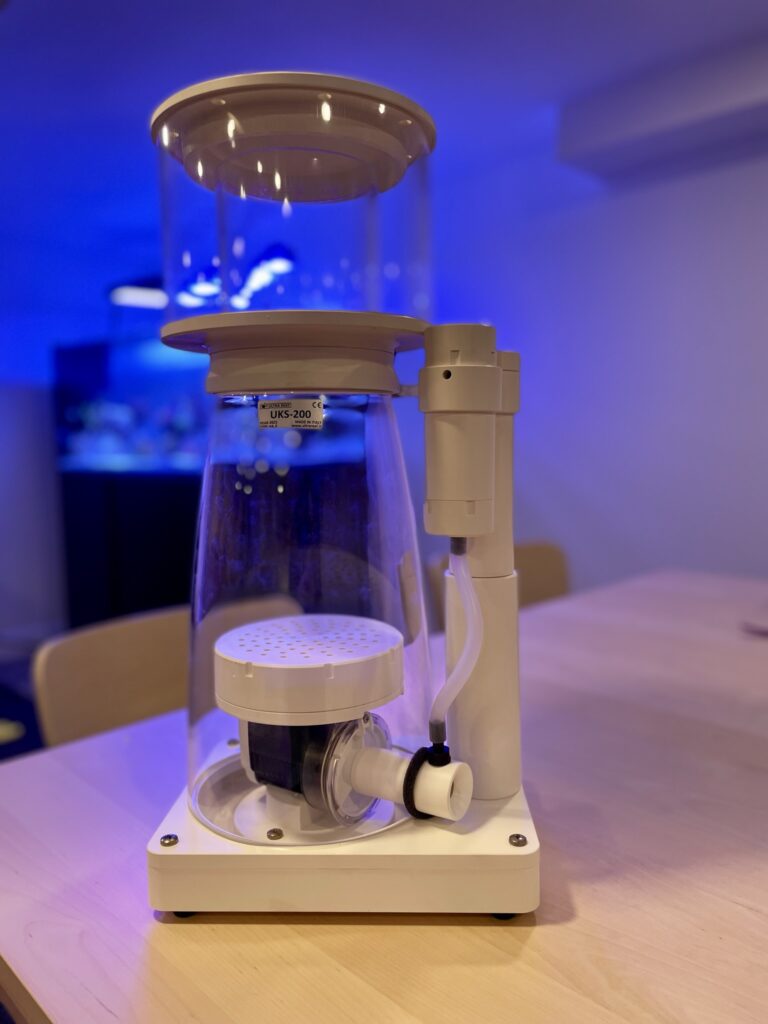
Considerations
Above all else, ensure that you have a properly sized skimmer. Without one, you not succeed with this method, or worse yet, may crash your system. Concerning media and other filtration I would only use carbon. Keep GFO and any other phosphate binding media out of your system as it will only lead to instability as it competes with the bacteria for nutrients.
I have already mentioned it but must state it again for emphasis: you MUST FEED YOUR SYSTEM PROPERLY! I can’t tell you how much food to feed your fish, it must come from your own observations and best judgement. If your corals are too light in coloration and/or lacking polyp extension; feed the system.
Who is this system designed for?
Depending on how its dosed and the amount of carbon and food inputted into the system this method can be applicable across all setups. LPS, Softy and SPS systems will derive benefit from carbon dosing. The caveat here is that you would be dosing less than recommended on LPS and softy setups as they generally tend to enjoy a bit more nutrients in the water. SPS on the other hand will thrive under this system at the recommended dosages.
There is a fine line of balance that must be followed. To cross that line of having too much or too little nutrients would invite trouble into your system. If I had to choose a side of the scale to fall on it would be the higher nutrients. While higher nutrients can bring about nuisance algae and if high enough, inhibit coral growth, too low of a nutrient level can absolutely crash a system. Care must be taken to properly feed the fish and system. Often times people who fail with this method do so because they have not properly feed the system and have bottomed out phosphate and nitrate.
Overall, I do not see much harm in trying this method out so long as you are conscientious and start up slowly. Keep an eye on your nutrients, corals and adjust from there. For those who have long struggled with nutrients and a lack of coral growth, this may very well be the missing piece of the puzzle.
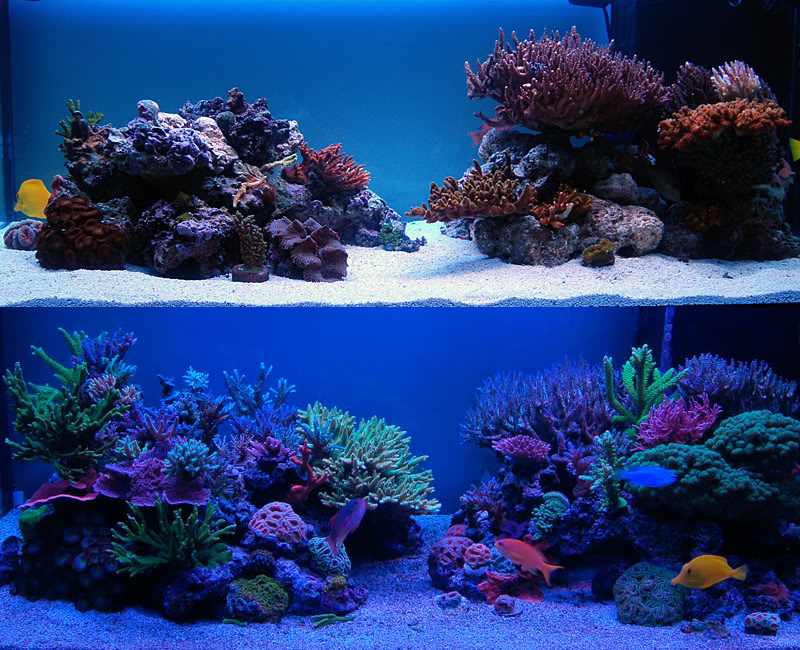 .
.
Updated image 03/11/2023

Well, the system has preformed beyond expectations and grown corals quicker than what I would have imagined.
You can read about the "Bacteria-Powered Reef" in the latest issue of Reef Hobbyist Magazine.
Original article: http://reefsite.com/bacterial-driven-system-a-recipe-for-success/
It’s no secret that I am a big fan of carbon dosing. I believe that it has played a large part in my success over the years. No other method that I have employed has produced the results exhibited via carbon dosing and bacterial additions to the system. The one two punch of nutrient export and coral nourishing properties is very hard to beat. Yes, there are other system that work but, in my experience, they require too much work for less than desirable outcomes. That is, when stacked against my experiences with carbon dosing. I have run the gamut of nutrient control from chemical (GFO) to natural (Refugium) and while they all lowered my nutrients not a single one fed my corals. Yes, the system in comparison to one carbon dosed was just as clean but the corals did not exhibit the same amount of growth as measured in a carbon dosed system.
I paint a rosy picture here but it’s not all sunshine and rainbows. Carbon dosing requires a good understanding of your system, and should be left to intermediate and experienced reefers. This method can quickly reduce your nutrients, shocking corals into a rapid tissue necrosis event. I have never suffered such an issue but it is important to point it out. As with any new method or change, one must start slow, observe, and gradually increase dosage. As we dig into the system, I will lay out some of the benefits and issues with dosing carbon and bacteria. I will also share my opinion on the matter and why I believe that even after all these years since I first started using and recommending it, carbon dosing is still my preferred method of reefing.
I will preface what follows by stating that I am not a scientist. Everything I write is based on personal experience. I have setup and maintained a number of award winning and successful reef aquariums but am by no way an expert on the matter. If the science looks funny to you or have a better method please by all means chime in or reach out directly to me. I am simply passing down my methods as I believe that replication is often the best course of action when attempting to build success. You take the best practices of those whom you would like to emulate and make it your own, adding and subtracting along the way. There have been many articles written on the subject, quite a few with much more detail and science. This is simply my take and philosophy on the matter. In this hobby and as in life, we are all students and constantly learning.

The Basics and Benefits
So, you’ve read this far so its safe to assume that I have peaked your interest. No doubt it was likely the images of my aquariums that led you in on this endeavor. Fundamentally, I believe that carbon dosing has helped me immensely and allowed for much success with SPS ushering in unprecedented growth and coloration. This is not a new system though. I have been leveraging bacteria and carbon dosing for 17+ years now, and I believe that KZ Zeovit has been doing it for even longer. Provided that you are careful and fully commit to the aquariums success, carbon dosing with be one of the greatest of tools in your arsenal.
I believe that carbon dosing is misunderstood. Far too many assume that it is simply a method of reducing nutrients. While this system of dosing will reduce nutrients, its primary benefit is the nutritional component and what it can do for your corals. Many are often shocked when told that I generally only feed flakes and pellets into my system. I do not add any of the myriad of coral food options. I feel that feeding these foods is a waste of time and money when you already have everything you need present in the system. You simply need to key in on that component and leverage it for maximum success. The component I am speaking of is bacteria.
The way the cycle works
carbon is dosed>bacteria multiply>nutrients are consumed>corals feed on bacteria>remaining bacteria is exported via a protein skimmer.
Nutrition in, nutrients out. That is what we are trying to accomplish here. Corals can derive 100% of their nutritional requirements through the absorption of Nitrate and phosphate, of which most systems have plenty of to go around. The key here is to get it into a form that the corals can absorb. By carbon and bacteria dosing we are increasing the number of bacteria in the system, which in turn will feed on the nutrients allowing for the corals to consume the bacteria. The final step in the process is for the skimmer to export the remaining bacteria. This final step is key. I would not recommend carbon dosing without a skimmer. Multiplying bacteria will reduce oxygen levels in an aquarium and a skimmer is a good way to offset this reduction. Secondly, the excess bacteria much be removed from the system, lest it be allowed to complete its lifecycle a, releasing stored nutrients back into the system.
The dosing itself it fairly straight forward. Simply follow the instructions on the bottle(s) and dose accordingly. I dose bacteria and carbon at first light, just as soon as the lights have turned on. This ensures that I am hitting the photosynthetic process in stride, reducing the likelihood that I will run into an issue due to a limitation of oxygen. I also want to have the least impact on Ph as possible. During daylight, organisms in the aquarium absorb C02 while at the same time increasing PH. Dosing late in the day is not recommended simply due to the decreased amount of oxygen in the aquarium available at that time. I do not turn off my skimmer or adjust any of my filtration systems when dosing. I will generally dose all of my supplements during this same time period without issue. The fish are also fed at this time of day as part of their twice daily feeding schedule.
It cannot be overstated that you must start out slowly with this system. I would recommend that you dose 25% of the recommended dosages as instructed on the bottle(s), moving up 5% daily until you have reached 100% of the recommended dosages. At first, you will not see a major change and that may be discouraging but give it time. Soon enough, you will start to see increased and/or darker skimmate, increased polyp extension on corals, increase in days required before cleaning the aquarium viewing panes, and possibly having to change the filter socks (if used) on a more frequent basis. At around the 3-4 week mark you should notice a quantifiable difference in the nutrients and coral growth and appearance.
During this initial phase, and at the one-month mark, care must be taken to observe the corals and overall system. Any changes in coral coloration should be noted and adjustments should be made based on your observations and Nitrate/phosphate tests. If corals have not lightened up in appearance and nutrients are still at a higher than expected level you will need to continue increasing the dose until the desired parameters are reached.
Overdosing is common and care must be taken here.
Some telltale sign that you are dosing too much carbon:
- Corals(SPS) exhibiting extremely light and pastel coloration.
- Red slime making an appearance and growing*. (SEE NOTE BELOW)
- Nutrient levels completely bottoming out to zero.
- Complete slowdown or sudden halt of growth on corals, especially SPS, evident with a lack of white growth tips.
Corals cannot utilize nitrate without phosphates present. This fact, amongst others has made me switch from vodka to a more balanced approach, one that will help maintain the balance. To help achieve this balance I dose Tropic Marin NP Bacto Balance as a carbon source. This source of carbon helps the bacteria to reproduce while ensuring that the correct ratio of nutrients is added to the aquarium. NP-Bacto is a mixture of carbon, nitrates and phosphates. If you are starting out with higher than desirable levels then I would start off with the Elimi-Bacto and once nutrient levels have reached the desired level, switch over to NP-Bacto to retain the balance.
This is the simplest method that I have found for maintaining the correct ration of nitrate and phosphate as you can quickly deplete a system of the aforementioned nutrients, which can and will result in undesirable outcomes. Vodka, sugar and even vinegar will work as carbon source but all eventually gave me cyanobacteria at some point in time. However, With Bacto-Balance, in two years of use I have yet to encounter a major issue with cyanobacteria or the sprouting of other undesirable algae. The second benefit of using Bacto-balance versus a DIY mixture is that I have been able to maintain an equilibrium of nutrients in the system without encountering issues such as the lighting of corals or reduced growth due to a lack of nutrients.

Toss Out the Coral Food?
Out of all of the benefits of carbon dosing, the feeding of the corals is my favorite feature. No other system I have used has provided this amount of growth and at such a cost-effective basis. Just think of how much money is spent on foods designed to feed corals. Many of which were never even designed for consumption by the corals. Here you have bacteria, something that is cheap and easy to reproduce, that will be readily eaten by the corals and is in lock step with their evolution and biology. Throw in the nutrient reduction component of dosing and you have a one two punch that is unmatched in the hobby. If you have fish in the aquarium and are already feeding them a balanced diet then you should have no need for coral specific food. The great thing about carbon dosing is that it will allow for you to feed much more food to the fish without impacting your overall system stability. The additional food will in turn fuel more rapid growth in the coral and likely the fish.
I know, it may run counter to everything reefers are told these days but I am proof that you do not need a steady stream of coral food(s) to grow corals and have success in the hobby. Save the money that would have gone towards coral food and invest in an ATO system, Kalk reactor, better skimmer or a higher quality fish food. But hey, if you are happy with the coral foods then by all means continue using them as this system here will only serve to compliment it as you will now be able to feed even more food. The coral food comments here are not scripture, and are simply my opinion and experience with them.

Considerations
Above all else, ensure that you have a properly sized skimmer. Without one, you not succeed with this method, or worse yet, may crash your system. Concerning media and other filtration I would only use carbon. Keep GFO and any other phosphate binding media out of your system as it will only lead to instability as it competes with the bacteria for nutrients.
I have already mentioned it but must state it again for emphasis: you MUST FEED YOUR SYSTEM PROPERLY! I can’t tell you how much food to feed your fish, it must come from your own observations and best judgement. If your corals are too light in coloration and/or lacking polyp extension; feed the system.
Who is this system designed for?
Depending on how its dosed and the amount of carbon and food inputted into the system this method can be applicable across all setups. LPS, Softy and SPS systems will derive benefit from carbon dosing. The caveat here is that you would be dosing less than recommended on LPS and softy setups as they generally tend to enjoy a bit more nutrients in the water. SPS on the other hand will thrive under this system at the recommended dosages.
There is a fine line of balance that must be followed. To cross that line of having too much or too little nutrients would invite trouble into your system. If I had to choose a side of the scale to fall on it would be the higher nutrients. While higher nutrients can bring about nuisance algae and if high enough, inhibit coral growth, too low of a nutrient level can absolutely crash a system. Care must be taken to properly feed the fish and system. Often times people who fail with this method do so because they have not properly feed the system and have bottomed out phosphate and nitrate.
Overall, I do not see much harm in trying this method out so long as you are conscientious and start up slowly. Keep an eye on your nutrients, corals and adjust from there. For those who have long struggled with nutrients and a lack of coral growth, this may very well be the missing piece of the puzzle.
 .
.Updated image 03/11/2023
Last edited:






